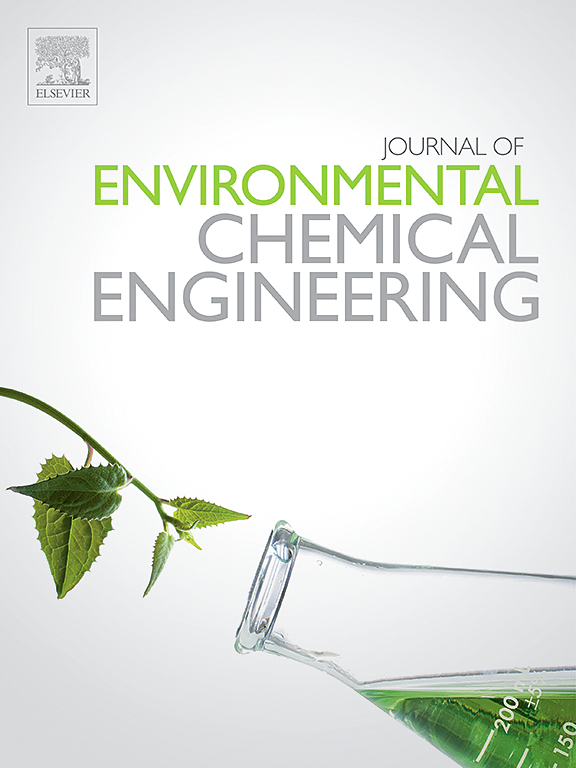热解生物炭表面官能团及其与水中重金属相互作用机理的研究进展
IF 7.4
2区 工程技术
Q1 ENGINEERING, CHEMICAL
引用次数: 0
摘要
水中重金属污染已成为一个重大的环境问题。在各种重金属处理方法中,热解生物炭因其吸附率高、理化性质多样而得到广泛应用。生物炭去除重金属的效果与其表面官能团的类型和特征密切相关。本文系统地综述了热解生物炭表面官能团的分类和特征,重点介绍了氧、氮、硫官能团的类型及其在吸附重金属中的作用机制。文章分析了热解条件和原料对这些官能团形成的影响,指出表面官能团通过电荷相互作用、配位络合、物理吸附等机制增强了生物炭对重金属的去除效率。文章还对生物炭表面官能团调控的方法和效果进行了详细的总结,并对未来的研究提出了建议,包括开发无公害化官能团引入技术和探索生物炭在其他领域的潜在应用。本文章由计算机程序翻译,如有差异,请以英文原文为准。
A complete review on the surface functional groups in pyrolyzed biochar and its interaction mechanism with heavy metal in water
Heavy metal pollution in water has become a major environmental issue. Among the various methods for heavy metal treatment, pyrolyzed biochar is widely used due to its high adsorption rate and diverse physicochemical properties. The effectiveness of biochar in removing heavy metals is closely related to the types and characteristics of its surface functional groups. This article systematically reviews the classification and characteristics of surface functional groups on pyrolyzed biochar, with a focus on the types of oxygen, nitrogen, and sulfur functional groups and their mechanisms of action in the adsorption of heavy metals. The article analyzes the impact of pyrolysis conditions and raw materials on the formation of these functional groups and points out that surface functional groups enhance the removal efficiency of heavy metals by biochar through charge interactions, coordination complexation, and physical adsorption, among other mechanisms. The article also provides a detailed summary of methods and effects for regulating surface functional groups and offers suggestions for future research, including the development of pollution-free functional group introduction techniques and the exploration of potential applications of biochar in other fields.
求助全文
通过发布文献求助,成功后即可免费获取论文全文。
去求助
来源期刊

Journal of Environmental Chemical Engineering
Environmental Science-Pollution
CiteScore
11.40
自引率
6.50%
发文量
2017
审稿时长
27 days
期刊介绍:
The Journal of Environmental Chemical Engineering (JECE) serves as a platform for the dissemination of original and innovative research focusing on the advancement of environmentally-friendly, sustainable technologies. JECE emphasizes the transition towards a carbon-neutral circular economy and a self-sufficient bio-based economy. Topics covered include soil, water, wastewater, and air decontamination; pollution monitoring, prevention, and control; advanced analytics, sensors, impact and risk assessment methodologies in environmental chemical engineering; resource recovery (water, nutrients, materials, energy); industrial ecology; valorization of waste streams; waste management (including e-waste); climate-water-energy-food nexus; novel materials for environmental, chemical, and energy applications; sustainability and environmental safety; water digitalization, water data science, and machine learning; process integration and intensification; recent developments in green chemistry for synthesis, catalysis, and energy; and original research on contaminants of emerging concern, persistent chemicals, and priority substances, including microplastics, nanoplastics, nanomaterials, micropollutants, antimicrobial resistance genes, and emerging pathogens (viruses, bacteria, parasites) of environmental significance.
 求助内容:
求助内容: 应助结果提醒方式:
应助结果提醒方式:


